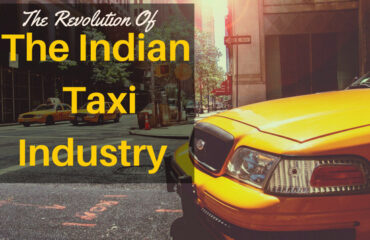
The present practice that we use in today’s world is for building models for everything that we do whether its for business or at times even various things that we do in our day to day lives. Earlier when we arrived at the successful business model we could continue with the same for years and at times decades toghter without making any changes to the successful model.
A business model is essentially a set of decisions that collectively determine how a business earns its revenue, incurs its costs, and manages its risks. The biggest challenge that we face is that small improvements and changes that are needed are often done on an ad hoc basis whenever there is a critical situation which needs to be addressed. This enables most organizations to miss out on those small improvements if done could have compounded to be a key differentiator over a period.
If we are looking at making those improvements on a regular basis what are the actual options that are available in front of us.
1.Narrow down the focus.
This involves narrowing down the focus ..The focus could be any of the segments or categories or components which are part of the business model. This was a very widely publicized strategy which was followed by Hindustan Unilever a few decades ago where they decided to focus on the top 100 brands in their portfolio etc. This has its own set of challenges as you would be opening gaps within the customer segments being addressed by you, allowing a smart player to take away that market and revenue share.
There was this huge news about how Tata were re-entering the beauty segment through one of their retail brands Zudio. Obviously, this move would be because of the potential market size and revenue that the Indian beauty segment commands and the rate of growth of this segment. What makes this move even more interesting is the first Indian beauty brand Lakme was created by the Tata group in the 1950s. They exited this segment about a decade or more ago citing that fashion wasn’t part of their focus areas.
The narrowing down of focus helps manage the customer needs, logistics and channel needs as its easier to predict the product needs and requirements. Consider parties who are operating exclusively in diapers. Just being focused on a single product helps understand the needs and requirements and builds your competency accordingly.
2. Market segments with differentiated needs.
Sometimes even in the same product category there are different consumer needs which can only be addressed separately. There are multiple articles that I had written earlier about consumer expectations and needs links of some of which are as shown below.
Customer Segmentation is of no use if you don’t Personalize the experience! | LinkedIn
(1) Small yet key steps to achieve Market dominating Disruptions… | LinkedIn
Consider the example of Maruti, Indias No 1 car manufacturer. Despite being the market leader in the economic vehicle segment Maruti was struggling to cater to the needs of customers who were migrating to the higher segments. What was even more interesting was that despite having a 50% plus market share and some of the best products in the next segment, even existing and satisfied Maruti customers were going for other brands.
So Maruti created the totally new retail chain called the Nexa and started selling all their premium products only through this chain while the balance models which generated volumes being sold through the existing retail chains. Whether Maruti had anticipated the shift of share more towards these premium segments from the economy segment, but this new creation helped it capture market share in this fast-growing segment and helped become market leaders in this segment also.
We can see the same happening with several retail chains, with them creating different brands addressing different consumer needs, price points and other requirements.
We find a lot of this happening even in the e commerce segment where almost all the players are offering a separate segment for instant delivery which is normally created and treated as separate as compared to the existing segment.
3. Build and scale
One of the biggest enablers in saving cost is building scale. One of the ways of building scale is building commonalities across platforms. And to build commonalities between platforms we will need to finetune some of the parameters which are contributing to the existing business model.
There was this interesting video that I saw recently where this person was opening various cars under the Volkswagen stable and highlighting how some parts, even the most critical ones like the engine, were common in Volkswagen, Skoda, Audi, Porsche and even Lamborghini.
In the e-commerce space Amazon grew to where they are by expanding and adapting their model to keep adding category after category after starting out with books.
Commonalities can also be adapted differently like the example of Indian low-cost carrier Indigo which would only use a particular make of aircraft to ease out the maintenance of the aircraft and lower the running costs by faster turnaround and carrying cargo in the same passenger aircrafts etc.
4. Create a hedged portfolio
Perhaps the most famous business models of today is this model made famous by the likes of Uber and Airbnb. Prior to this the same was widely capitalized by the Indian Software industry by riding the outsourcing wave in the various sectors. These are all a evolution of trying to improve business models that were being practiced which resulted in the creation of these models.
In today’s rapidly evolving market landscape, thriving requires more than mere adaptation—it demands proactive, systematic innovation. Transforming business models from reactive, ad hoc adjustments to structured, continuous improvement is essential for sustained growth and resilience. Organizations must embed flexibility within their strategic frameworks, emphasizing a culture that champions data-driven insights, iterative thinking, and agile processes.
Leadership plays a pivotal role in guiding this transformation, fostering an environment of perpetual learning and curiosity. This shift from chaotic, reactionary measures to a disciplined, consistent approach to evolution is more than just a strategy—it’s the cornerstone of long-term, sustainable success in an unpredictable world. To continue getting more updates on creating and evolving business models do subscribe to my LinkedIn page, Rejo’s Business Bytes, or my website, rejofrancis.com



